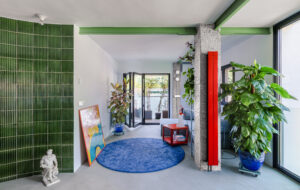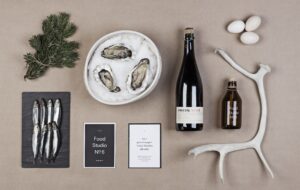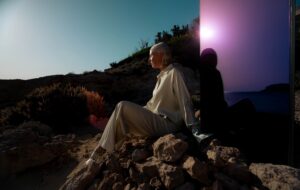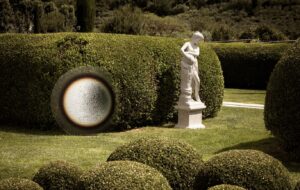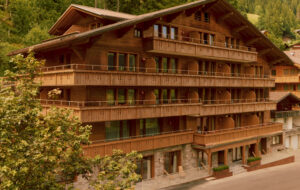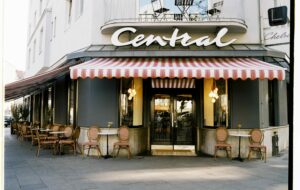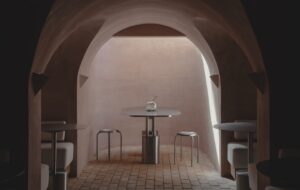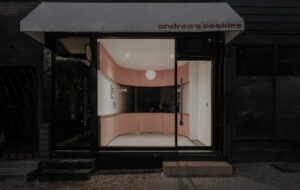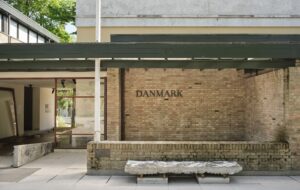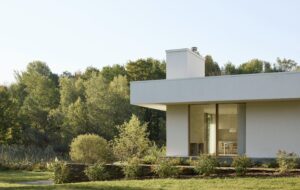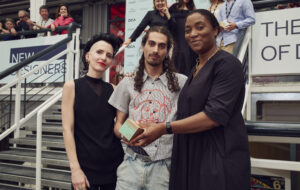|
Huw Lemmey praises a “capitalist realist” artist who tackled the politics of post-war Germany with rare clarity Walkings 1-6 (1970) by KP Brehmer is an almost classic example of structuralist filmmaking. Title cards show the length of film used in the work; a voiceover announces the distance the man in the film is to walk, in footsteps. The man proceeds to walk the distance. Next, a voiceover describes the artist showing the film to the friend who inspired it; the friend, he explains, then asked him to destroy the film and never link it to his name. What tempers this cool, critical filmmaking are the locations: the man takes his steps in front of the Berlin Siegessäule, the column erected to celebrate the Prussian victory over Denmark, while the film inspired by a stroll with a friend traces the edges of the Berlin Wall. This alliance, between the formal, often dry presentation, and powerful, agitational content, marks Brehmer’s project of reasserting the political function of art following the Nazis’ suppression of the avant-garde. Brehmer’s work should also be seen within the context of the weak internationalist abstraction of West German art in the early 1950s, an attempt to renounce the supposedly discredited forms of representation within both fascist art and socialist realism, and re-orientate German artists towards the steady hand of the US by fabricating a derivative and bland form of abstract expressionism. It was by rebelling against this Mexican standoff that a new generation of German artists managed to establish a selection of visual languages with which to tackle the new political and economic realities of a divided Germany. Recoiling from his persecution in the DDR by asserting the autonomy (or, perhaps more properly, the autarchy) of the artist from any imperative of social engagement, Georg Baselitz reanimated expression, producing a bourgeois, proto-fascistic project aimed at breathing life back into a discredited set of German cultural archetypes – the hunter, the woodsman – emerging, wraith-like, from the Black Forest. Joseph Beuys, meanwhile, fully embraced the artist as a social being, but located him (invariably a him) within a mythos of shamanism, healing society’s ills by a combination of magic and will. KP Brehmer existed at the margins of a third camp, “capitalist realism”, located firmly within the material and ideological conditions of the German “economic miracle”, alongside artists such as Gerhard Richter and Sigmar Polke. It is not insignificant, then, that gallerist René Block, who curated the show Kapitalistischer Realismus in 1964, referred to the concept as “not a style, not an ideology” but “quite simply a brand”. Of all these artists, Brehmer was perhaps the clearest in his understanding of the political-economic realities of his time, and interrogating the role of culture within them. Druckfarbenmuster Ideale Landschaft (1968), for example, explodes the social constructions behind ideals of the natural landscape, breaking down a pastoral image into a series of printed colour charts. Some of the most powerful works in this impressive exhibition revolve around his series Materialsammlung Seele und Gefühl, produced at the end of the 1970s. Based on time and motion studies of workers’ feelings and emotions, these works spring from Brehmer’s increasing interest with statistics as an indicator of social make-up. As large-scale paintings, they dominate the room, drawing the viewer to make their own snap judgments on the mood, context and productive roles. The clash of statistics and effect repeats itself in Korrektur der National Farben, Gemessen an der Vermögensverteilung (1972), a remodelling of the German flag with the width of each band of colour determined by the distribution of wealth: suddenly the flag becomes almost entirely yellow, representing the wealth of big business, with a small strip of black (for the middle classes) and red (for the workers) at the top. Perhaps this isn’t the subtlest of gestures but, taken in context, it indicates the clear, sober exposition of the relationship between cultural production, ideological production and capitalism within post-war Germany in Brehmer’s work. That process can’t avoid being both partisan and vigorous. KP Brehmer. Real Capital-Production was on show at Raven Row, London, from 25 September to 30 November 2014 |
Words Huw Lemmey
Images: Courtesy of the estate of KP Brehmer, Berlin |
|
|


